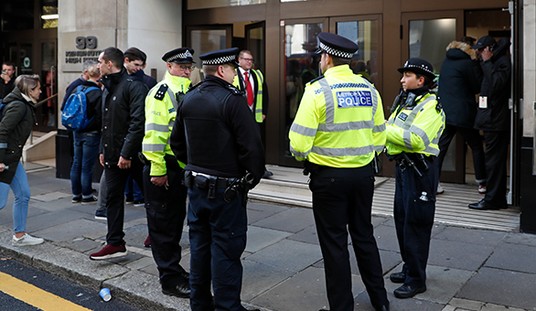Like the proverbial general waging the last war, America’s pundit class has dug in around a Maginot Line of conventional wisdom erected around President Barack Obama’s electoral coalition in preparation for the next engagement.
In a May article for Politico Magazine, the University of Virginia’s Center for Politics crew took an admittedly early look at the electoral map ahead of the 2016 contest and came up with some disappointing conclusions for Republicans. While it’s true that it’s too early to make any concrete assumptions about how the race for the White House will develop, it’s fair to note that the seven tossup states will give readers a sense of “déjà vu.”
“It’s effectively the same map we featured for much of the 2012 cycle, and it unmistakably suggests the Democratic nominee should start the election as at least a marginal Electoral College favorite over his or (probably) her Republican rival,” they wrote. “However, at the starting gate it is wiser to argue that the next election is basically a 50-50 proposition.”
Politico’s Dylan Byers chose to ignore that last sentence. “Let’s be honest with ourselves for a second: This is Hillary Clinton’s election to lose,” he declared.
On Nov. 8, 2016, Clinton will start — start — with a minimum 247 of the 270 electoral votes she needs to win. If you give her Colorado and Virginia — which many political strategists would, given the Hispanic population in one and the rising influence of the northern-centered population in the other — she’ll start with 269. That means Clinton doesn’t need Ohio or Florida. She just needs one small state like Iowa, Nevada or New Hampshire to put her over the edge. And because she’s got a boatload of money and no viable primary challenger, she’ll have plenty of time and resources to lock up at least one of those states.
Sure, Florida and Ohio are, as they have been for the better part of a half-century, must-win states for Republicans if they hope to secure 270 Electoral College votes. But Democrats have seen their firewall states in the Upper Midwest teeter over the course of the Obama presidency. What’s more, Virginia, North Carolina, and Colorado – three states in which the “coalition of the ascendant” were supposed to deliver a generation of unbroken Democratic governance – are pure tossups or GOP-favored states at this early stage of the race.
Byers’ fatalism is not sitting well with statistics guru and FiveThirtyEight founder Nate Silver. In his latest piece, Silver took a dive into the historical data from 1992 to today and determined that electoral “locks” are made to be broken.
“[W]hen commentators talk about the Democrats’ ‘blue wall,’ all they’re really pointing out is that Democrats have had a pretty good run in presidential elections lately,” Silver wrote. “And they have, if you conveniently draw the line at 1992 (it doesn’t sound so impressive to instead say Democrats have won five of the 12 elections since 1968).”
He performed a series of tests to see how the Electoral College would swing with relatively minor shifts in the popular vote. A universally applied 5-point swing in popular vote results in a number of states shifting from one camp to the other and an Electoral College landslide. It’s a pretty fascinating dive into recent electoral history and fully worth the read.
Hey, look: I can get carried away, too. If the 2016 election turns out to be close, we’ll be sweating the small stuff by October and November. The difference between a 50 percent and a 55 percent chance of victory for Clinton or Marco Rubio or whomever because of Electoral College dynamics will seem like a pretty big deal.
But for now? The Electoral College just isn’t worth worrying about much. If you see analysts talking about the “blue wall,” all they’re really saying is that Democrats have won a bunch of presidential elections lately — an obvious fact that probably doesn’t have much predictive power for what will happen this time around.
I’m not saying Clinton is doomed. Rather, I think the “fundamentals” point toward her chances being about 50-50, and I wouldn’t argue vigorously if you claimed the chances were more like 60-40 in one or the other direction. But Clinton is no sort of lock, and if she loses the popular vote by even a few percentage points, the “blue wall” will seem as archaic as talk of a permanent Republican majority.
If there is smart money on the 2016 election, it’s still in the bright gamblers’ pockets. It’s far too early to begin making pronouncements about either party’s viability based solely on either the Democratic Party’s advantage with minority voters or the historical headwinds that will hinder Democratic prospects and benefit Republicans in 2016. It’s foolish to ignore the lessons of the last war, but no one ever has the fortune of being able to refight the battles of the past.









Join the conversation as a VIP Member